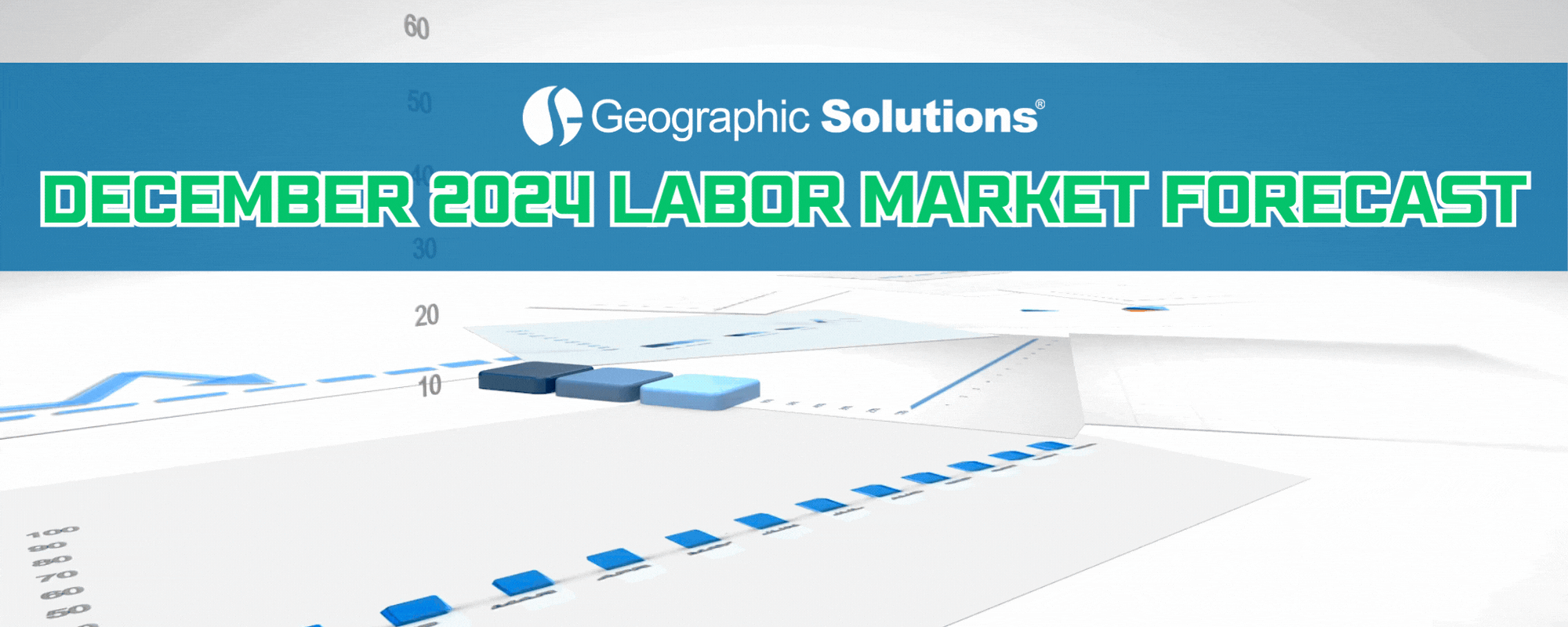
U.S. employment is expected to increase by 177,000 jobs in December
KEY TAKEAWAY: Employment in the U.S. is expected to increase in December 2024 by 177,000 jobs while the unemployment rate is expected to rise to 4.3%.
-1.png?width=1000&height=150&name=LABOR%20MARKET%20OVERVIEW%20(1)-1.png)


Employment
- Our Expectations: The forecast shows employment growth in December will be lighter than in November. However, several factors may influence the results more than usual. One significant factor is the ongoing economic recovery from the Hurricanes this fall. Additionally, the December survey period will be the first one entirely after the November election. The initial reaction to the outcome by some policy-sensitive industries may be evident in the jobs report.
- Diving in: Private Education & Health Services and the Public sectors in November maintained the high growth we have seen over the last year. While Education & Health Services look to remain the primary job generators in the labor market heading into next year, the Public sector may see some diminishment at the Federal level with the incoming administration’s call to cut discretionary spending.
Unemployment Outlook
- Here's the Scoop: The U-6 unemployment rate, which includes discouraged, underemployed, and unemployed workers in the country, rose to 7.8% in November. The U-3 unemployment rate, which indicates only the number of unemployed people actively seeking a job, increased to 4.2%.
- What Does This Mean?: An increasing unemployment rate (both U-3 & U-6) with a declining labor force participation rate is a worrying combination. This trend indicates that some individuals who were previously looking for work have become discouraged and stopped. Additionally, those who have remained in the labor force are finding it more difficult to be employed. This may be another symptom of the hurricanes as some workers who initially declared temporary unemployment later permanently left their jobs, and may not have begun searching for new jobs yet.
Key Indicators
-
What We're Watching: The factors determining the predicted job creation and unemployment rate are below. They include the number of monthly job openings, average job salaries, job searchers, and the number of unemployment claims applications. This data from Geographic Solutions' (GSI) during the December survey period shows the following:

Analyzing these figures normally helps to paint a clearer picture of what to expect from the upcoming labor market report. Based on the numbers we can expect to see a labor market ending the year somewhat weaker than it started.
Employment & Unemployment Forecast
.png?width=850&height=85&name=Labor%20Market%20Overview%20-%20Charcoal%20(2).png)
Yes. Although job growth will be slow, recent employment gains coupled with an uptick in labor force participation rate seem to be enough to maintain positive forward momentum.
The large job growth seen over the last year gives the Federal Reserve room to maintain or raise rates without pushing the economy into a recession.
The labor market may give the appearance of being tight to some, but here's why it's not. Typically a tight labor market means that the unemployment rate maintains a low rate after a period of decline, job growth slows, and wage growth picks up. Recent growth in jobs contradicts that we're in a tight labor market.
Geographic Solutions derives its employment forecast and unemployment rate forecast from internal data on the number of job openings, searchers, and employment and unemployment applications filed on Geographic Solutions' state client sites. The forecast uses unemployment claims data from the U.S. Department of Labor (USDOL).
.gif)

Are you enjoying Phillip Sprehe’s insights and analysis? Interested in having him speak or provide content for podcast, television, internet, or other mediums? Please email us using this form.
